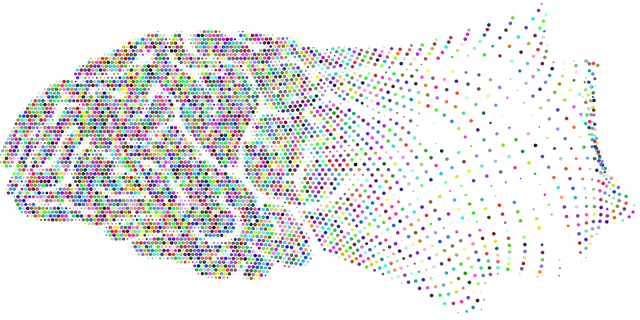Arvada Autism Spectrum Disorder (ASD) Therapy emphasizes positive thinking exercises to improve mental health for individuals with ASD. This approach focuses on shifting perspectives, reframing negative thoughts, and cultivating gratitude, offering significant emotional healing and anxiety relief. Through structured self-care routines, individuals learn to manage emotions by identifying and challenging negative thought patterns, replacing them with positives, and adopting mindfulness techniques. Tailored sessions use role-playing scenarios to improve social confidence, fostering emotional awareness and resilience, as supported by the Stress Management Workshops Organization's principles. Effective strategies involve cognitive assessments, culturally sensitive exercises, crisis intervention guidance, and regular progress tracking to ensure continuous improvement in well-being.
“Unleash the power of positive thinking in Arvada Autism Spectrum Disorder (ASD) therapy with tailored exercises. This comprehensive guide explores the profound impact of cognitive reframing on individuals with ASD, uncovering strategies to identify and challenge negative thought patterns. By designing personalized exercises, therapists can empower clients to navigate their unique challenges. Effective implementation techniques and progress tracking methods ensure optimal results. Discover how these practices transform Arvada ASD therapy, fostering resilience and enhancing overall well-being.”
- Understanding Positive Thinking and Its Impact on Individuals with ASD
- Identifying Negative Thought Patterns in Autism Spectrum Disorder (ASD) Therapy
- Designing Customized Positive Thinking Exercises for Arvada ASD Therapy Sessions
- Implementing the Exercises: Strategies for Effective Delivery
- Tracking Progress and Adjusting the Positive Thinking Exercise Routine
Understanding Positive Thinking and Its Impact on Individuals with ASD

Positive thinking exercises have emerged as a powerful tool in assisting individuals with Autism Spectrum Disorder (ASD) to navigate and improve their mental health. Understanding positive thinking involves recognizing that it’s not merely optimism but a conscious shift towards focusing on the good aspects of life, reframing negative thoughts, and cultivating gratitude. This approach can significantly impact those with ASD by enhancing their emotional healing processes and offering anxiety relief, which are crucial components of their overall well-being.
In Arvada Autism Spectrum Disorder Therapy, positive thinking is integrated into comprehensive treatment plans, targeting the unique needs of each individual. By incorporating these exercises into a structured self-care routine development, individuals with ASD can learn to manage their emotional responses more effectively. This involves identifying and challenging negative thought patterns, replacing them with more realistic and positive ones, and practicing mindfulness techniques that promote calmness and reduce anxiety. Such practices not only support better mental health but also foster a sense of empowerment, enabling individuals to cope with daily challenges and lead fulfilling lives.
Identifying Negative Thought Patterns in Autism Spectrum Disorder (ASD) Therapy

Many individuals with Autism Spectrum Disorder (ASD) face unique challenges when it comes to managing their mental health and well-being. One significant aspect of Arvada autism spectrum disorder therapy is identifying and addressing negative thought patterns. These patterns can often manifest as persistent and distorted beliefs, leading to feelings of anxiety, depression, or even agitation. Through compassionate cultivation practices, therapists aim to help clients recognize these unhelpful thoughts and replace them with more positive and realistic ones.
In the context of ASD therapy, understanding the individual’s thought process is crucial. Healthcare providers must be culturally competent and trained in risk assessment for mental health professionals to effectively navigate this process. By promoting self-awareness and teaching alternative coping mechanisms, therapists empower individuals with ASD to better manage their emotions and improve their overall quality of life.
Designing Customized Positive Thinking Exercises for Arvada ASD Therapy Sessions

In the context of Arvada Autism Spectrum Disorder (ASD) therapy sessions, designing customized positive thinking exercises is a powerful approach to enhancing clients’ overall well-being. These tailored activities aim to empower individuals with ASD by fostering self-esteem and promoting self-awareness. Therapists can create unique scenarios or games that encourage positive thoughts and reframing strategies, addressing specific challenges faced by each client. For instance, role-playing exercises can help individuals navigate social interactions with increased confidence.
By integrating these customized practices into therapy, the Stress Management Workshops Organization’s principles of self-improvement can be effectively supported. Self-awareness exercises, designed to help clients recognize and understand their emotions, can be combined with positive thinking techniques to build resilience against anxiety and stress. This personalized approach ensures that each session is engaging and impactful, catering to the unique needs of individuals navigating the spectrum.
Implementing the Exercises: Strategies for Effective Delivery

Implementing positive thinking exercises requires a strategic approach to ensure their effective delivery, especially when tailored for individuals with Arvada Autism Spectrum Disorder (ASD). Mental health professionals should first assess the client’s current cognitive and emotional state, incorporating a risk assessment to identify any potential triggers or vulnerabilities. This foundational step is crucial in creating a safe space for learning and growth.
Cultural sensitivity in mental healthcare practice is paramount. Professionals must adapt these exercises to resonate with the individual’s cultural background and personal preferences, drawing from the client’s unique experiences. For instance, incorporating culturally relevant metaphors or stories can make the therapy more engaging. Additionally, crisis intervention guidance should be readily available for those who may experience emotional distress during or after the exercises, ensuring a supportive environment that fosters resilience and positive thinking.
Tracking Progress and Adjusting the Positive Thinking Exercise Routine

Tracking progress is a vital component of any successful therapy or self-improvement journey. In the context of Arvada Autism Spectrum Disorder (ASD) Therapy, implementing a positive thinking exercise routine should be accompanied by regular assessments to gauge its effectiveness. By documenting changes in mood, behavior, and overall well-being, individuals and therapists can identify what’s working and what needs adjustment. This data-driven approach allows for tailored modifications, ensuring the practice remains relevant and beneficial over time.
Adjusting your positive thinking exercise routine could involve refining techniques, introducing new strategies, or increasing the frequency of existing practices. For instance, if a particular meditation method proves ineffective in reducing anxiety, compassion cultivation practices might be incorporated to foster self-care and emotional regulation. Conversely, if the exercises successfully alleviate symptoms, the intensity or complexity can be gradually increased to challenge and further enhance cognitive processes.
The implementation of positive thinking exercises in Arvada Autism Spectrum Disorder (ASD) therapy has proven to be a powerful tool for enhancing overall well-being. By understanding the unique cognitive profiles of individuals with ASD and identifying specific negative thought patterns, therapists can design tailored interventions. These exercises not only empower clients but also foster self-awareness and resilience. Through effective delivery strategies and regular progress tracking, Arvada ASD therapy sessions can create a transformative environment, enabling individuals to navigate life with greater confidence and positivity.














